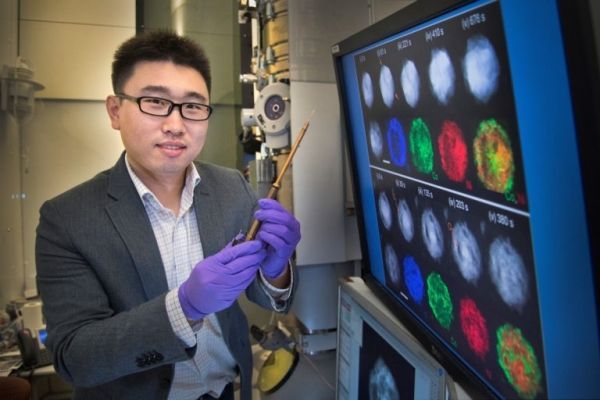The ammonia you use to clean and disinfect your kitchen floor starts off as nitrogen, a gas that makes up almost 80 percent of Earth’s atmosphere. But the conversion requires the breaking of a strong triple-chemical bond in a high-heat, high-pressure industrial process.
UCI physicist Huolin Xin worked with his colleagues at Brookhaven National Laboratory to come up with a new, more sustainable way of producing ammonia, which is also a key ingredient in crop fertilizers. Their technique uses atomically dispersed molybdenum, a readily available metal, as a catalyst to electrochemically convert nitrogen to ammonia at room temperature and atmospheric pressure.
Continue reading at University of California Irvine
Image via Brookhaven National Laboratory


